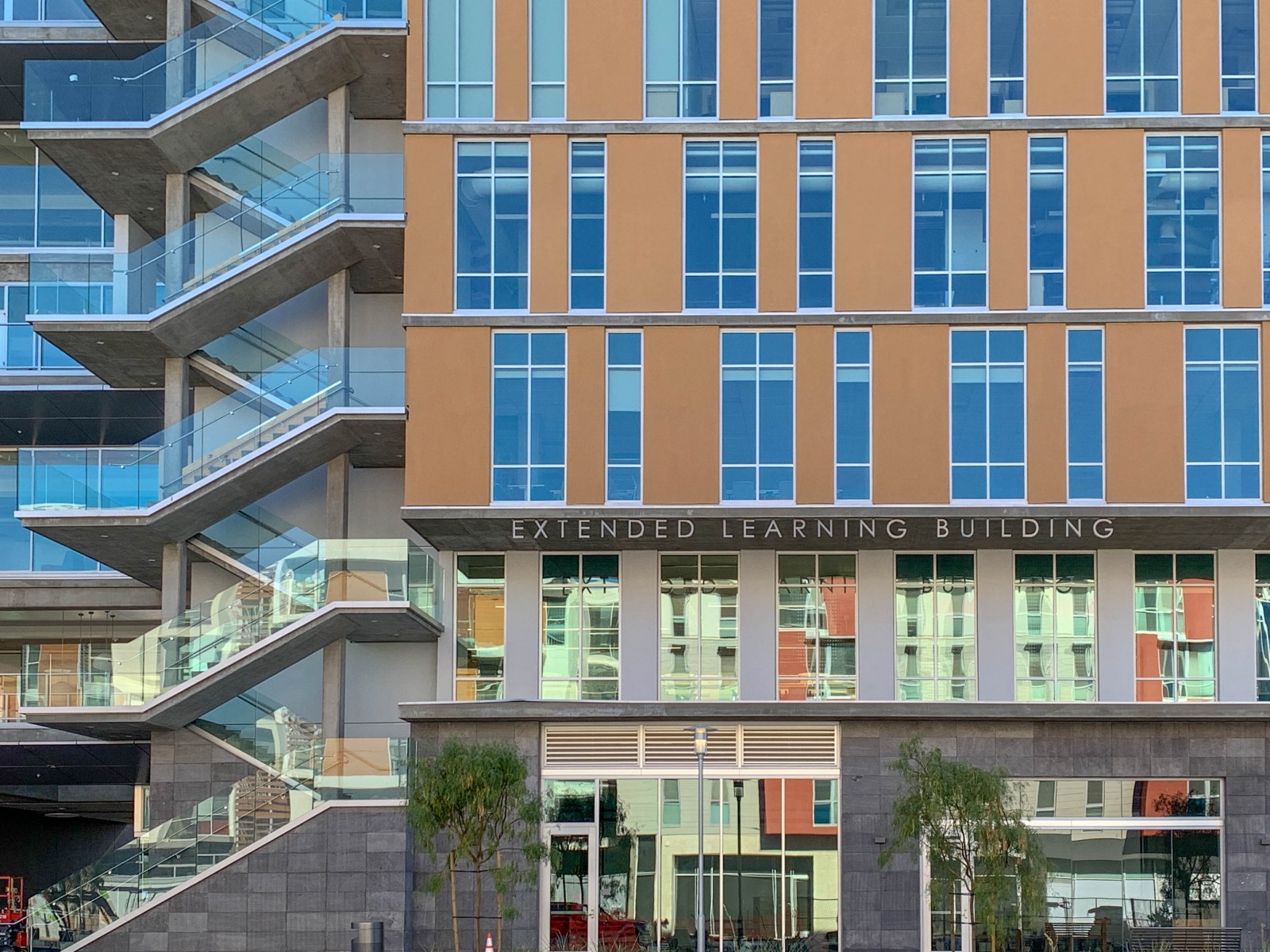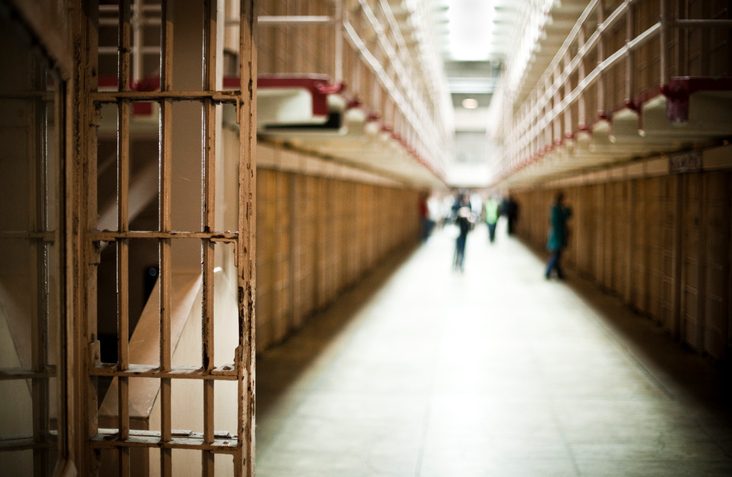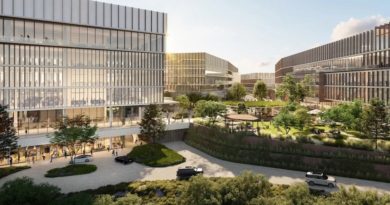Daily Business Report-Aug. 27, 2019
CSUSM’s new Extended Learning building is the largest academic building on campus. (Photo courtesy of CSUSM)
New Extended Learning building
at CSUSM a gateway to innovation
With its official opening on Monday, Cal State San Marcos’ Extended Learning building moved from first shovel to first class in just 16 months. As the largest academic building on campus, the six-story, 135,000-square-foot EL building (ELB) brings all Extended Learning operations under one roof for the first time and becomes home to student support centers, lab and research facilities, select CSUSM academic departments, administrative offices such as CSUSM Corporation and inventive learning spaces such as the CSUSM Corp Innovation Hub.
With every college at CSUSM represented in the building and programs serving individuals from first-year undergraduates to lifelong learners, the ELB is a comprehensive education center designed to bridge disciplines and inspire innovation. The facility includes 19 new classroom and lab spaces equipped with technology-rich features such as 4K projectors and mobile instructor stations with touch-screen displays and digital pens for annotation.
“This multifunction space creates opportunities for the campus to grow programs,” said Bella Newberg, executive director of CSUSM Corporation. “This is a great space for interdisciplinary activity. We are always going to have specialized buildings, but having flexible space is an asset to the campus as a whole. This model really is the future.”
__________________
40 Under 40 Award Winners
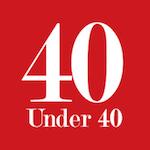
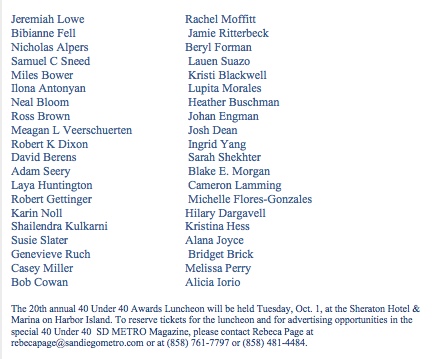
__________________
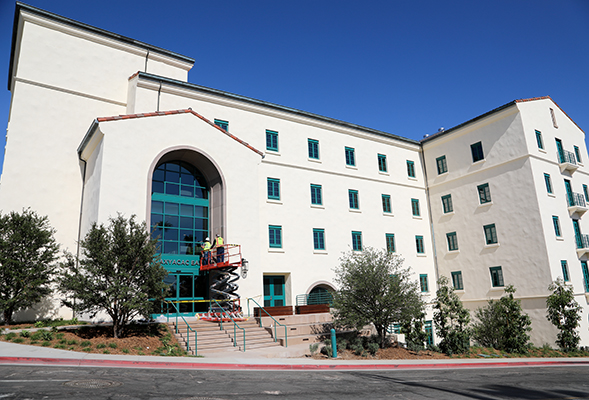
New residence hall highlights
construction projects at SDSU
A new residence hall is the highlight in a flurry of construction, upgrades and beautification projects for San Diego State University completed over the summer.
Huaxyacac—we’ll get to the proper pronunciation in a moment—continues the SDSU tradition of assigning Nahuatl names to campus residence halls and apartments.
On Thursday, the first of its 800 student occupants began moving into the four-story structure, which boasts its own community market and coffee shop.
A completely refurbished recreation field to help meet growing demand, and a repaving project along a central walkway are among other new touches and upgrades to the campus as the 2019-20 academic year gets underway.
Huaxyacac
After two years of construction on a former parking lot along Remington Road on the west side of campus, the residence hall is now open. Comprising mostly two-bedroom units with a smattering of larger three-bed units, it’s the newest living space at SDSU since South Campus Plaza opened in January 2017.
In the language spoken by the Nahua people known historically as Aztecs, Huaxyacac is the name for the Oaxaca region of Mexico. It’s not pronounced the same, however, the name of the hall sounds like wah-she-YAH-cack.
Click here for more construction updates from SDSU.
__________________
San Diego universities worry about growth,
money, violence as fall classes begin
San Diego Union-Tribune
On the eve of fall classes, the specter of gun violence is adding to the list of difficult, expensive problems faced by San Diego County’s five major universities, who will collectively enroll almost 100,000 students.
At the top of that list is money.
__________________
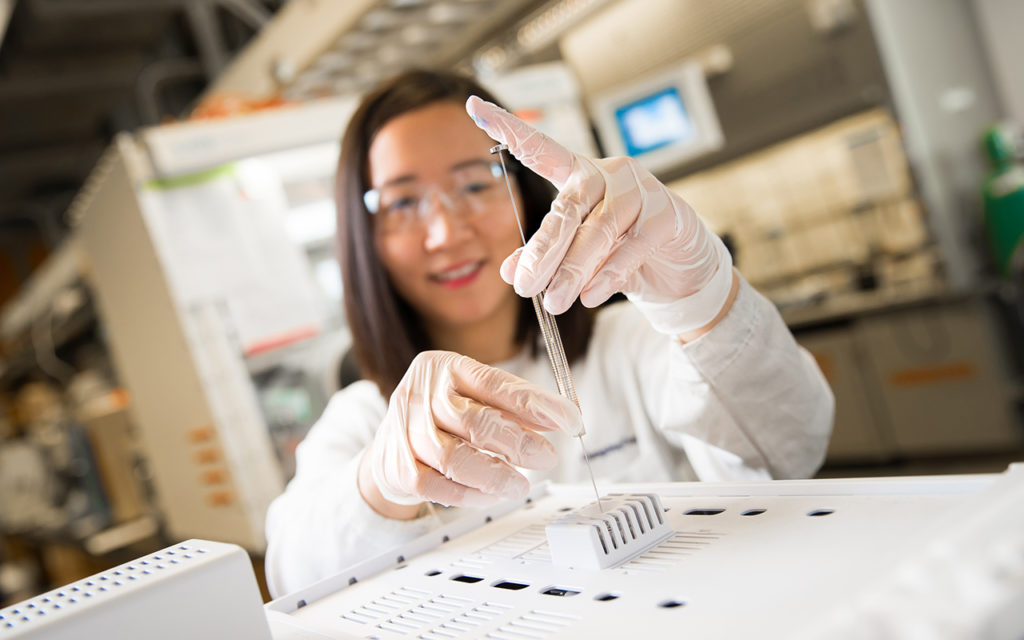
Study identifies main culprit
behind metal battery failure
A research team led by the University of California San Diego has discovered the root cause of why lithium metal batteries fail—bits of lithium metal deposits break off from the surface of the anode during discharging and are trapped as “dead” or inactive lithium that the battery can no longer access.
The discovery, published Aug. 21 in Nature, challenges the conventional belief that lithium metal batteries fail because of the growth of a layer, called the solid electrolyte interphase (SEI), between the lithium anode and the electrolyte. The researchers made their discovery by developing a technique to measure the amounts of inactive lithium species on the anode—a first in the field of battery research—and studying their micro- and nanostructures.
The findings could pave the way for bringing rechargeable lithium metal batteries from the lab to the market.
__________________
USD receives $1.23 million
grant for opioid use disorders
The University of San Diego was awarded a $1.23 million federal grant by the Health Resources and Services Administration (HRSA) as pat of its Opioid Workforce Expansion Program. The grant will be used for community-based experiential training focused on Opioid Use Disorders and Substance Use Disorders for students preparing to become behavioral health professionals.
This recent segment of grants from HRSA is in response to the United States Opioid crisis and in support of the Health and Human Services Five-Point Opioid Strategy.
“These funds enable HRSA grantees to continue to implement or expand substance use disorder and mental health services across the Nation,” said HRSA Administrator George Sigounas.
__________________
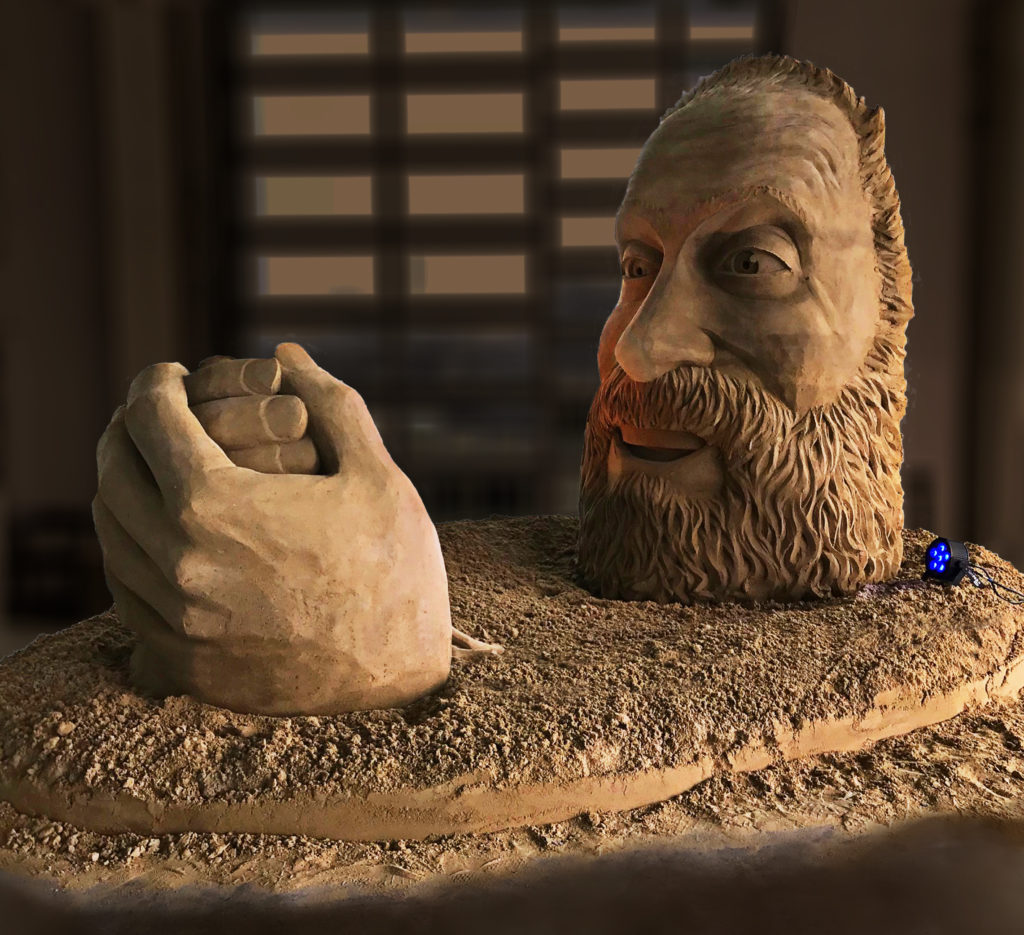
Port of San Diego’s 8th annual
U.S. Sand Sculpting Challenge returns
The U.S. Sand Sculpting Challenge and Dimensional Art Exposition will return to San Diego’s Downtown waterfront on Saturday, Sunday and Monday in what has become a local Labor Day weekend tradition.
The Port of San Diego Experiences event will be in its eighth year as one of the world’s most prominent sand-sculpting competitions, held on a built-for-the-occasion beach, with over 300 tons of sand dumped on Broadway Pier. The theme for this year’s event is “Wonder,” which pays tribute to the Port’s Wonderfront 2019 events that also include Wonderspaces, an art exhibit running all summer through Labor Day weekend, and the Wonderfront Music Festival, coming to the waterfront in November.
The competition will feature 12 Master Class Sculptors, seven from countries around the world and five from the United States, defending the title won last year by Thomas Koet of Melbourne, Fla.
There are no more than 50 artists on the planet who compete at this level and those who appear in San Diego are among the best. They carve museum-quality sculptures made from only sand and water that can reach up to 15 feet tall and weigh over 20,000 pounds.

